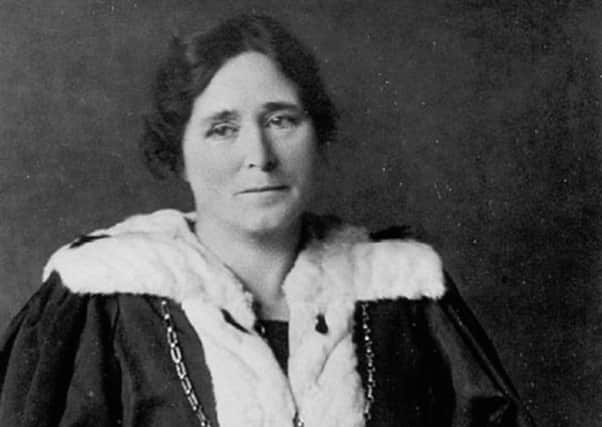Statue of Mary Barbour planned for Glasgow


Barbour was instrumental in the fight against rent increases in Glasgow during the First World War.
The statue has been designed by sculptor Andrew Brown, and is set to be unveiled outside Govan subway station on 17 November.
Advertisement
Hide AdAdvertisement
Hide AdWhile there are 11 statues of men in George Square alone, there are currently only three statues of women displayed across the city.
At present, the only women commemorated with statues in Glasgow are Queen Victoria, the philanthropist Isabella Elder, and the Spanish Civil War heroine Dolores Ibarruri.
Former Labour MP, Maria Fyfe, is the chairwoman of a committee which campaigned for the statue to be commissioned. The committee raised £110,000 through local donations
Born in 1875, in Kilbarchan, Renfrewshire, Barbour was the daughter of a hardloom carpet weaver.
Advertisement
Hide AdAdvertisement
Hide AdIn 1896, she married an engineer, David Barbour, and the couple settled in Govan. When the First World War began in 1914, the city’s men were sent to the front lines, so more workers moved to Glasgow to work at the shipyards and factories. This influx of workers resulted in severe overcrowding, and landlords increased rents by up to 23 per cent.
In response, Barbour set up the South Govan Women’s Housing Association, which became known as ‘Mrs Barbour’s Army’.
Barbour also organised resistance against evictions. She encouraged tenants to throw flour and water at bailiffs attempting to evict them. By November 1915, more than 20,000 tenants were on strike. When a factor tried to prosecute 18 tenants for non-payment of a rent increase, thousands of women marched
alongside male workers outside the court. The court contacted Lloyd George, the munitions minister, who promised to take action by passing a Rent Restrictions Act.
Advertisement
Hide AdAdvertisement
Hide AdIn June 1916, Barbour co-founded the Women’s Peace Crusade,which campaigned for a negotiated settlement to the First World War. On May Day 1917, she spoke to 70,000 people who had gathered at Glasgow Green for their annual celebrations. Barbour stood as the Labour candidate for Fairfield, Govan, in 1920, becoming one of the city’s first female councillors, and later one of the first female magistrates. On top of her other accomplishments, Barbour also set up the first family planning centre in Glasgow.
